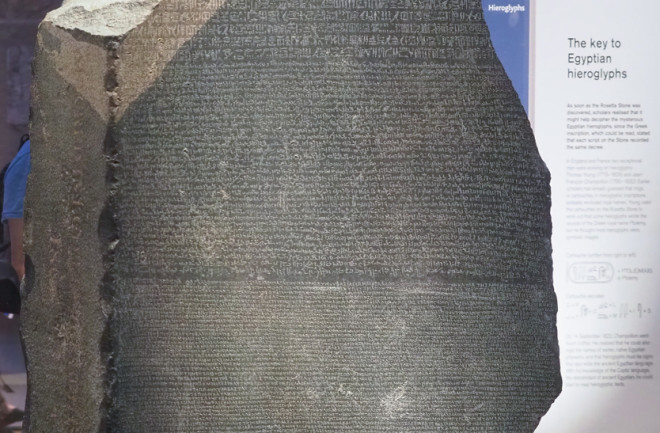In 1799, a French soldier found and seized a precious stone tablet during Napoleon Bonaparte’s invasion of Egypt. Taken from a fort near the town of Rosetta, this inscribed slab, now widely known as the Rosetta Stone, became pivotal in deciphering ancient Egyptian hieroglyphs. It is typically recognized as one of the most important finds in Egyptology.
On the Stone, the same message was written in three scripts, which enabled scholars such as Thomas Young and Jean-Francois Champollion to interpret hieroglyphs. As important as the Stone is, however, the text itself recounts a rather dull affair and is one of many copies made. It amounts to a decree by a council of priests from Memphis, Egypt praising the deeds of Ptolemy V Epiphanes who ruled Egypt at the time it was written.

